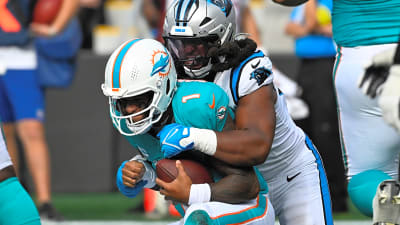Why Greasing Boat Trailer Bearings Matters
Boat trailer bearings failing on the highway can ruin a fishing trip. But they can also put you in a really unsafe situation. Maintaining them is quick, easy, and something every boat owner should learn to do.
The following steps apply to most standard unsealed bearing hubs which are common on lots of boat trailers, but there are some exceptions. Double check your owners manual to confirm which style of hubs are on your trailer.
What You’ll Need to Grease Boat Trailer Bearings
- Jack
- Lug wrench
- Marine-grade grease
- Hammer
- Pliers
- Flat screwdriver
- Wood block
- Brake cleaner spray
- Shop rags
Step-by-Step: How to Grease Boat Trailer Bearings
Step 1. Remove Lug Nuts
Just like changing a flat tire, start by cracking loose your lug nuts while the tire is still on the ground. Once loose, slide a jack under the axle and raise the tire off the ground. Continue removing the lug nuts and remove the tire.
Step 2. Remove Wheel Bearing Cap
Remove the bearing cap by lightly tapping it at angle with a hammer. It should pop out a little. Spin the wheel a half turn and repeat. You can keep spinning and tapping until the cap comes off, or once it's started, stick a flat screwdriver in the gap you've created and pry it off.
Step 3. Remove Cotter Pin and Castle Nut
A cotter pin keeps the castle nut from loosening. First, straighten the bent end of the cotter pin with a pliers (it's bent so it fits inside the bearing cap.) Then insert a pliers inside the rounded end of the pin and pull it out. With the cotter pin removed, unscrew the castle nut and remove the washer behind it.
Step 4. Take Out and Clean Outer Bearing
Slide out the outer bearing. Using brake cleaner, spray the bearing to remove old grease. Spray and wipe until the bearing is completely free of grease. Inspect bearing for damage. If it's worn, replace it.
Step 5. Slide Out Hub
Slide out the hub to get at the inner bearing. Rest the hub with the inner bearing pointing down between two blocks. Position the bearing over the gap between the blocks so you can pound it out. Find a dowel or similar block of wood (use wood, which has some give. Using something rigid like metal could damage the bearing) that is narrow enough to slide in the hub, but narrower than the bearing. I cut a block to shape with trial and error and now keep it with my bearing grease for this one specific job.
With the wooden dowel over the bearing, pound it out with a hammer. Detach the bearing from the inner seal and clean both with brake cleaner.
Step 6. Re-Lube Bearings
With both inner and outer bearings completely cleaned of grease, pack them with new marine-grade grease, which is resistant to water. You can put them in a special bearing packer, which jams grease into the bearing, or do it by hand. Work the grease into every gap around each bearing. Better to use too much grease than too little. At every point in the process, only let the bearings come in contact with clean surfaces if you set them down. Don't let dirt or other debris get inside the bearings!
Step 7. Replace Inner Bearing and Seal
Inspect the bearing and seal for damage. If they are in good condition, you can re-use them. Otherwise replace them. Place the greased inner bearing back in the inside of the hub. Place the seal over the top. Put a block of wood over the seal and squarely hit the wood block with a hammer to seat the bearing and seal.
Step 8. Grease the Spindle
Apply a generous amount of grease to the spindle. Then slide the hub onto the spindle.
Step 9. Replace the Outer Bearing, Washer and Castle Nut
Slide the outer bearing onto the greased spindle. Make sure it goes on all the way. Add the washer. Then replace the castle nut. Screw the castle nut on by hand all the way, then back it off one notch so the bearings can spin freely. Insert the cotter pin back through the notch and bend the end so it stays inside the bearing cap
Step 10. Replace the Bearing Cap
Pound on the bearing cap with a piece of wood between the hammer and the bearing cap to avoid damage. Hit it squarely so it seats flush.
Step 11. Replace Tire and Tighten Lugs
Put the tire back on the hub and tighten the lug nuts. Lower the jack and when the tire is on the ground (keeping the tire from spinning) further tighten the lug nuts
Don’t Let a Bad Bearing Ruin a Perfect Fishing Day
A blown trailer bearing can turn what was supposed to be a great day on the water into a long, exhausting roadside repair. This quick, easy, inexpensive DIY routine, performed at least once per year will keep your trailer road-ready and your focus on your fishing.
You Might Also Like These Fishing Stories:
More must-reads:
- Suspended Guardians pitchers blocked from playing in winter league
- 49ers LB Fred Warner to undergo surgery
- The 'NFL total touchdown pass leaders' quiz
Breaking News
Trending News
Customize Your Newsletter
 +
+
Get the latest news and rumors, customized to your favorite sports and teams. Emailed daily. Always free!








